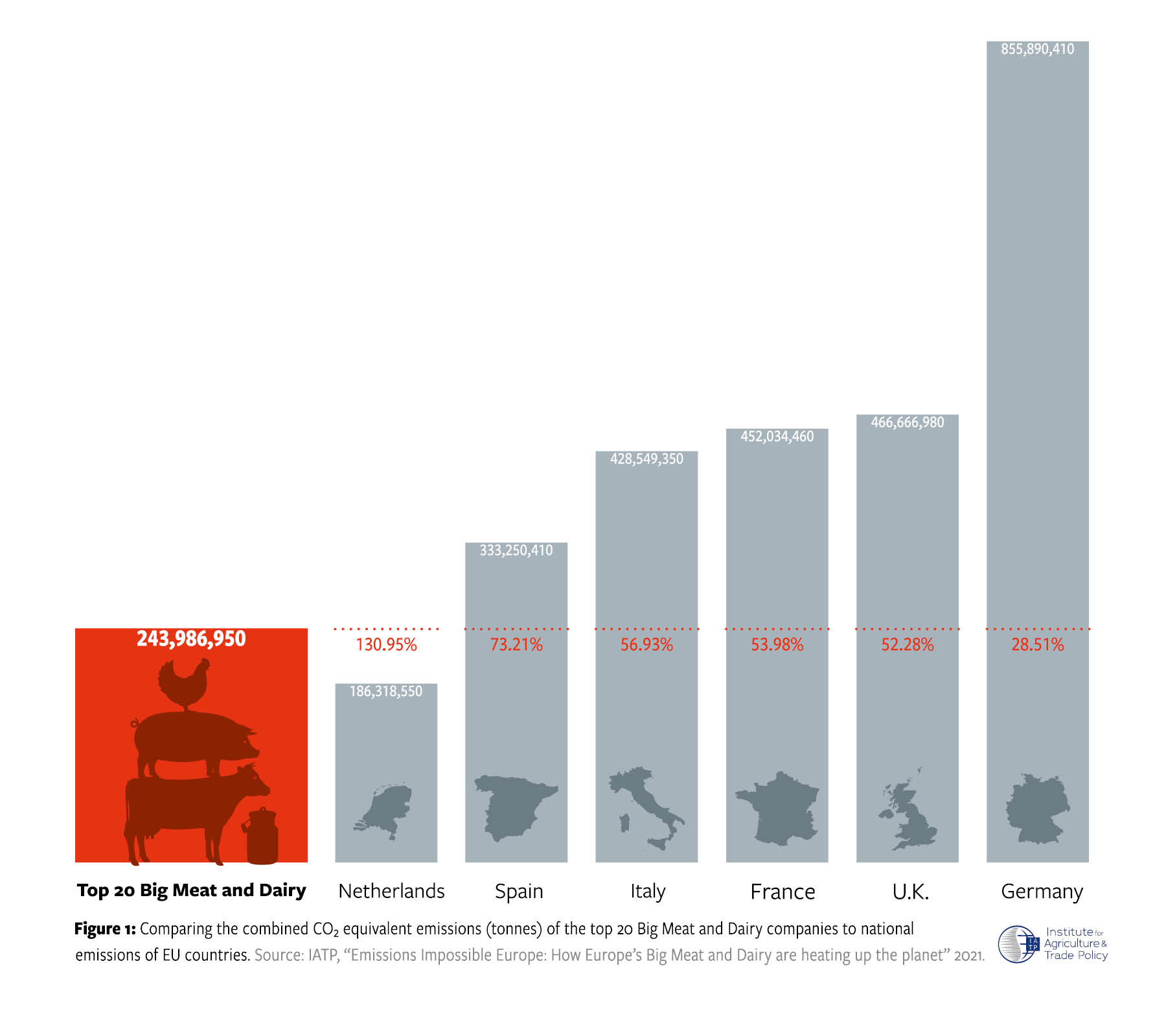In our new report, Emissions Impossible Europe: How Europe’s big meat and dairy are heating up the planet, IATP has calculated the emissions of 35 of the largest meat and dairy corporations with headquarters in the European Union (EU) and Switzerland. The findings are alarming. Most are still not reporting their greenhouse gas (GHG) emissions. Of the 20 companies we examined in detail, only three have committed to reducing their total emissions from livestock. Only one of these three has publicly reported its emissions and targets in detail. None of the companies we examined have expressed an intention to reduce the number of livestock in their supply chains, where 90% of meat and dairy emissions originate.
At COP 26, governments including the EU pledged to reduce methane by 30% by 2030 as part of the Global Methane Pledge. The mass industrial production of livestock contributes to 30% of global methane emission. Fifty-three percent of the EU’s methane emissions come from agriculture — most of it from livestock.
We believe that documenting, analyzing and exposing global meat and dairy corporations’ contribution to climate change is essential in creating a systemic shift in agricultural systems that restore nature, the planet and the people who produce and help bring food to our tables. As such, in our Emissions Impossible series, we have examined the agricultural emissions of multinational livestock and dairy companies. In 2018, in a joint report with GRAIN, we showed the scale of those emissions, which rival those of Big Oil. In 2020, our Milking the Planet report exposed the continued rise of emissions from global dairy companies. In this latest iteration of the series, we focus on companies based in Europe because the EU is in the process of a wholesale revision of its climate regulations, including how to address agriculture emissions.
Just 20 European meat and dairy companies combined produce the equivalent of more than half of the United Kingdom, France and Italy’s emissions. They produced 131% of the Netherlands’, 73% of Spain’s and 29% of Germany’s total emissions.

The report’s findings should be a cause for serious and systemic regulatory action to transition away from this high emitting and destructive model of industrial agriculture. This report shows how — rather than reducing livestock emissions — EU’s Big Meat and Dairy are employing narratives and strategies, including dubious carbon offsets, that result in a green smokescreen over the industry’s contribution to climate change. It explains why, instead, they must be held to account for urgently needed action to reduce emissions this decade.
The science shows unambiguously that cutting methane and food system emissions this decade would help humanity limit global warming to 1.5°C, a necessary action in tandem with the phaseout of fossil fuels. Yet, Big Meat and Dairy has continued to increase emissions and their clout, doing little to change growth plans or their damaging model of production, which relies on the continued expansion of the number of animals in their supply chains.
The EU has an enormous opportunity in the next few years to revamp climate policy in a way that does not let Big Meat and Dairy off the hook by allowing dubious offsets. This means that EU and its member states must wake up to our existential crisis and begin regulating agribusiness. They can and must support a just transition to agroecology, which not only empowers food growers, but also restores ecosystems. We need all hands on deck at every level to make this happen.
Watch
Watch a short video about the report here.